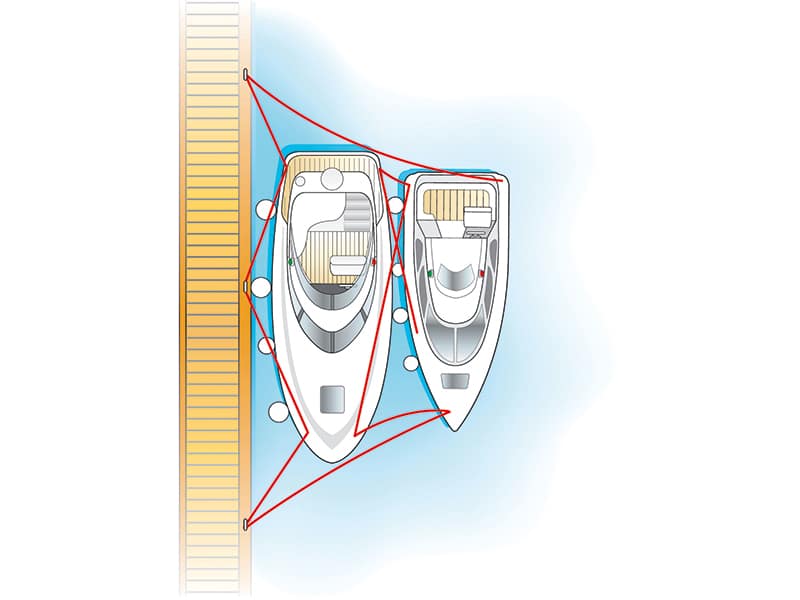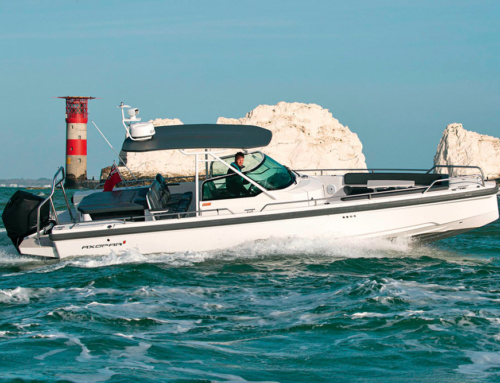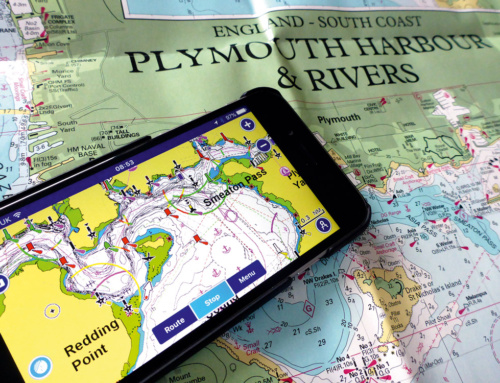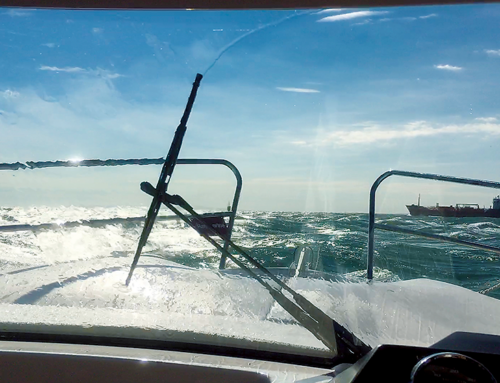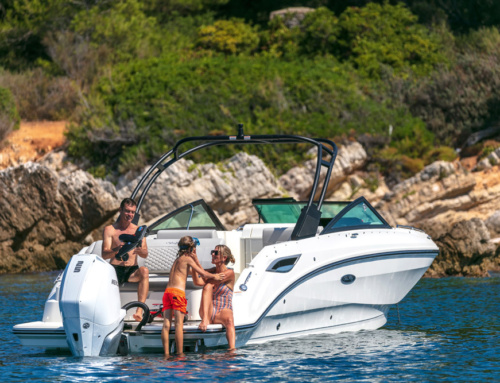- If you’ve kept communication open with the inside boat, there should be no surprises when they want to head off.
- You may be happy having heels or soles that could mark on your deck, but it’s only polite to walk quietly when crossing someone else’s boat or take off your shoes if they could mark.
Rafting can test the patience of the most placid motor cruisers and powerboaters, and in the height of summer, mooring spaces alongside pontoons are like gold dust. So how can you ensure you and your temporary neighbours stay on good terms? The RYA’s Emma Slater shares her top rafting tips…
‘Rafting, in principle, is a basic skill,’ explains Vaughan Marsh, the RYA’s Chief Instructor, Sail and Motor Cruising, ‘and the manoeuvres required to put your vessel outside of another boat are no different to coming alongside a pontoon. But if you’ve never had to do it before, would you know what to do and say before you started moving across another boat? Rafting is expected, and most people are fine about it, but refreshing your rafting etiquette is never going to do any harm.’
Top rafting tips
Because of the way you need to tie your lines to the other vessel and shore (more on that later), find a similar-size boat to yours. If you don’t have that luxury, and find yourself as a bigger vessel alongside a smaller one, see if the boat inside might swap positions before you settle in. A smaller vessel rafted alongside a larger inside boat isn’t so much of an issue, but as you will be stepping off to go ashore, being roughly the same height is useful. This is why motor cruisers largely raft with motor cruisers, powerboats with powerboats, RIBs with RIBs and yachts with yachts.
Before you come alongside, motor past and hail the vessel you’re looking to raft to so you can see if anyone is aboard. In a marina, the staff may already have somewhere they want you to go, but if not, if you can find a vessel with someone to ask permission from, it could save an awkward conversation later. If you have no choice but to raft with an empty craft, look out for when the crew return, introduce yourselves as soon as possible and find out when they intend to leave.
Set your fenders at the right height. The inside vessel may already have fenders out, partly to signal they are happy for a rafter to join them, but as the rafting craft, fendering is ultimately your responsibility. Look out for any superstructures on top of the boat too. This is generally less of an issue on power than on sail vessels, but if there is something that might touch in a bit of swell, position yourself fore or aft of it.
Get the lines on ASAP. First, secure yourself against the inside craft using your bow and stern lines and springs, then use longer lines and take extra bow and stern lines ashore to hold the weight of your boat. Let the inside boat know when your shore lines are on to reassure them they aren’t taking your vessel’s weight on their lines and cleats. You might also need to adjust your lines at high and low water so you don’t end up either squeezing the inside boat or the lines being ineffectual and having all your vessel’s weight on their lines. If using shore power, you will need to ensure this isn’t a trip hazard and possibly adjust with the tide too.
Once safely tied on and you want to venture ashore, it’s courtesy to traverse the inside boat across the foredeck. Nobody wants strangers peering into their hatch as they traipse across the stern! When tying on the stern shore line you might have to go around the back of the inside boat, so check it’s OK first.
You may be happy having heels or soles that could mark on your deck, but it’s only polite to walk quietly when crossing someone else’s boat or take off your shoes if they could mark. Likewise, if the kids have been to the beach and are covered in sand, rinse them off with a bucket of water before getting back aboard. The inside boat is going to end up dirtier as people cross it, so try to keep that to a minimum.
If you’ve kept communication open with the inside boat, there should be no surprises when they want to head off. There are two possible scenarios.
If you plan to leave after them, be on deck before their planned leaving time, with enough crew to move your boat and assist them if needed. Once they are ready to slip, simply motor away; let the inside boat leave and then you can come back into the vacant space. Remember, you may need to adjust your fenders.
Alternatively, adjust your lines so they can leave with your vessel still attached to the shore by a shore line. They will need to nominate if they are leaving forward or astern. For this scenario, let’s presume they have elected to reverse out. If you have enough crew, and are comfortable doing it, remove then re-rig your shore stern line so it runs from your stern in front of their bow and back to where it was on shore.
Often sitting it on top of their anchor or bow while waiting for them to move is handy ‒ this line must be tended at all times and not go under or be attached to their vessel. Then remove the (slack) redundant lines securing your vessel to theirs. Once they are ready to reverse out, remove all lines attaching you to them so you’re just secured to the shore by your bow line and the slack, very long stern shore line. You will need two or three crewmembers ‒ one each on your shore bow and stern lines, while a third with a roaming fender is useful.
As they reverse out, fender where needed and keep your lines quite slack if possible. As they move back, start pulling in on your bow line, without squeezing their boat, with a crewmember tending the stern line to make sure it doesn’t attach or go under the other vessel, and bring it in very slowly as they leave. Once they have gone, adjust your fenders, then pull alongside the pontoon. Secure as normal, tidy away your long lines, then put the kettle on and prepare for someone to raft to you!

